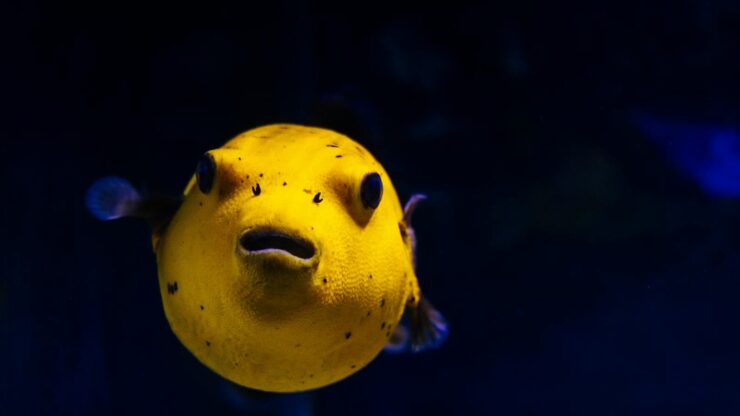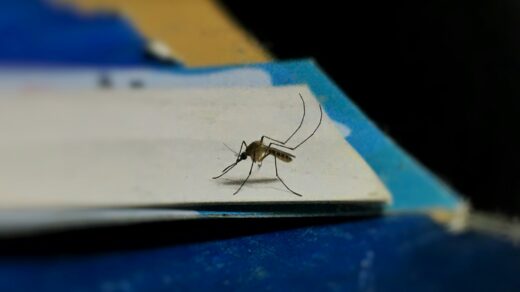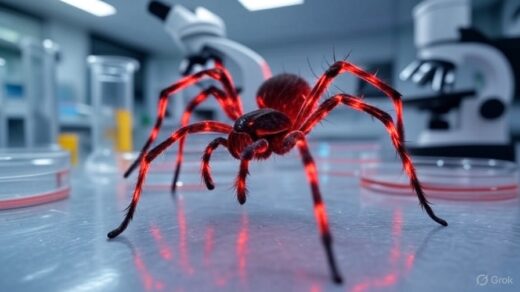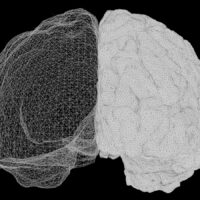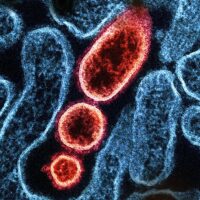Development of the Olfactory Organ
Ontogenetically, the peripheral olfactory organ is the first chemosensory organ to develop in fish, preceding the gustatory. It originates from an anlage formed by the ectoderm and remains ectodermal throughout its development. In rainbow trout (Oncorhynchus mykiss), the anlage appears on the ventrolateral part of the head just in front of the rudimentary eyes as early as 11 days postfertilization and 5–8 mm in length.
Separate ventrolateral olfactory placodes emerge from the thickened ectoderm, built by cells that separate from the anterior neural plate. The homogeneous population of the olfactory placodal cells then differentiates into the olfactory organ.
On 12–16 days postfertilization, the embryos rapidly elongate, primordial organ systems become visible, and the olfactory placodes thicken and begin to form a central depression. At hatching, the olfactory pits, now rectangular-shaped grooves, migrate to a dorsolateral position on the head. In embryos, 15–20 mm in length, the median portion of the external lip of the elongating olfactory pit expands toward the internal lip, resulting in the formation of distinct anterior and posterior nares.
The salmonid type of nasal formation is widespread among teleosts and is phylogenetically considered to be archetypical. There is considerable variation in size, structure, and degree of development of the olfactory organs.
The paired olfactory pits are usually located on the dorsal side of the head. Eels and morays have large and elongated olfactory pits, extending from the tip of the snout to the orbit of the eye. Certain puffers (Tetrodontidae), in contrast, have completely lost the nasal sac.
However, in most teleost species, the olfactory organ lies somewhere between these two extremes. In few cases, there are differences between sexes of the same species, for example, bathypelagic anglerfishes. Each nasal pit generally has two openings, anterior inlet and posterior outlet, which are separated by a nasal flap or bridge.
Water Flow in the Olfactory Organ
A current of water enters the anterior and leaves through the posterior opening, either passively through the locomotion of the fish in water or actively by ciliary action within the pits or by the pumping action of the nasal sac. In some teleosts, two accessory nasal sacs, the ethmoid and the lacrimal sac, a single nasal sac, or a fused nasal sac assist in ventilating unidirectional water flow through the nasal cavity.
The occurrence of these nasal sacs has long been associated with the need to regulate water flow in sedentary bottom-dwelling fish, but this is questionable in many cases.
Olfactory Epithelium
The olfactory epithelium lines the olfactory cavity and is generally raised from the floor of the organ into a complicated series of folds or lamellae to make rosette-like arrangements. The arrangement, shape, and degree of development of the lamellae in the olfactory rosette of teleosts vary considerably among species.
The largest number of lamellae (over 200) occurs in Anguilliformes, while few or no lamella exists in some Atheriniformes and Tetrodontiformes. Normally, a central ridge is formed rostro-caudally on the bottom of the olfactory chamber from which a varying number of transverse lamellae radiate. In some teleosts, a series of parallel lamellae occur in the absence of the ridge.
A new lamella develops caudad and progresses rostrad, so that the oldest and largest lamella is located most posteriorly. The number of the lamellae increases to some extent with the growth of individuals but remains constant after the fish reaches a certain stage in growth. Secondary folding of the lamella occurs in some species.
Most notable are salmonids; there are 5–10 secondary folds per lamella in adults, but none in the parr and younger stages. The olfactory lamella is composed of two layers of epithelium enclosing a thin stromal sheet. The epithelium, columnar pseudostratified (65–85 mm in thickness), is separated into two regions: sensory and nonsensory.
Structure of the Olfactory Epithelium
The sensory epithelium shows various distribution patterns:
– Continuous except for the lamella margin (Anguilla, Ictalurus)
– Separated regularly by the nonsensory epithelium (Salmoniformes)
– Interspersed irregularly with the nonsensory epithelium (Gasterosteus, Thunnus)
– Scattered in islets (Phoxinus, Cyprinus, and Carassius)
The sensory epithelium consists of three main cell types:
– Receptor cells (olfactory receptor (OR) neurons)
– Supporting cells
– Basal cells
The nonsensory epithelium is of a stratified squamous type, usually thinner than the sensory epithelium. It consists of epidermal cells, ciliated nonsensory cells, and basal cells. Mucus cells (goblet cells) usually occur only within the nonsensory epithelium. The stromal sheet, which is separated by a basal lamina from the epithelium, is filled with loose fibers and cell bodies of the connective tissue.
It also contains blood capillaries and bundles of axons arising from the bottom of the receptor neurons. In addition to the olfactory axons, free nerve endings are generally present, some of which are identified as sensory fibers of the trigeminal nerves.
Olfactory Receptor Neurons
Traditionally, two morphologically and ontogenetically distinct receptor neuron types have been recognized in teleosts: ciliated and microvillar. This situation contrasts with those of terrestrial vertebrates, including humans, where the olfactory neurons are segregated into two separate compartments:
– Ciliated neurons populate the main olfactory epithelium.
– Microvillar neurons lie in the vomeronasal organ.
In rainbow trout embryos, the ciliated form precedes the microvillar form; the former appears when the olfactory placode is folded to form a groove-like structure rostrad to the eye and predominates until immature microvillar receptor neurons develop at about 28 days postfertilization. A third neuron type, crypt cells, has recently been added to the list of receptor neurons.
The crypt cell type is widely distributed in teleost fishes but has not yet been reported in salmonids. The scarcity, however, makes them difficult to find in ordinary electron-microscopic preparations, despite the fact that they line up in a queue in some species.
Elasmobranchs and Australian lungfish (Neoceratodus forsteri) have only microvillar-type neurons, while river lamprey (Lampetra fluviatilis) has only the ciliated. There is currently no evidence to suggest that different neuron types mediate responses to different odorants.
Olfactory (Odorant) Receptors (ORs)
The initial step in olfaction requires the interaction of odorant molecules with specific receptors on OR neurons. This sensory information is then transmitted to the brain, where it is decoded.
A large multigene family that encodes ORs on olfactory neurons was first identified in rodents. Subsequent studies identified homologous gene families in a variety of vertebrate species, including fishes:
catfish, zebrafish, goldfish, medaka, loaches, and salmon
These genes belong to the superfamily encoding G-protein-coupled receptors (GPCRs), whose protein products exhibit a seven-transmembrane domain structure.
Diversity of Olfactory Receptor Genes
The repertoire of OR genes is extremely large, numbering around 100 in fish to as many as 1000 for some mammals. Whole genome analysis reveals the complete set of 143 OR genes in zebrafish, 44 in fugu, and 42 in Tetrodon. Interestingly, the OR gene family identified in fishes is smaller in number but much more diverse than in mammals, and the gene groups found in mammals are nearly absent in fishes.
Fish ORs belong to one of three families of GPCRs, the family C GPCRs, along with those for glutamate and aminobutyric acid, for Ca2+, for sweet and amino acid taste compounds, and for some mammalian pheromone molecules.
One of the most important characteristic features of these ORs is the possession of a large extracellular domain that is responsible for ligand recognition and is structurally similar to the metabotropic glutamate receptor. In situ hybridization experiments with channel catfish provide strong evidence that individual olfactory neurons express a limited subset of ORs.
Assuming that the catfish genome encodes as few as 100 OR genes, each neuron expresses one or a few ORs. Furthermore, neurons expressing specific ORs appear to be randomly distributed within the olfactory epithelium. These data are consistent with a model in which randomly dispersed olfactory neurons with common receptor specificities project to common glomeruli in the olfactory bulb.
Conclusion
The olfactory system in fish is an intricate and vital sensory mechanism that showcases significant diversity across species. From early embryonic development, the peripheral olfactory organ emerges as the first chemosensory system, with a range of structural variations among different teleosts, such as the varying sizes of olfactory pits and the presence of accessory nasal sacs.
The olfactory epithelium, composed of complex lamellae and distinct sensory and nonsensory regions, allows fish to detect a broad spectrum of odorants. This is facilitated by a variety of receptor neurons, including ciliated, microvillar, and crypt cells.
The extensive and diverse gene family encoding olfactory receptors in fish highlights their evolutionary adaptation to various aquatic environments. Overall, the olfactory system plays a crucial role in the survival of fish, influencing essential behaviors such as feeding, mating, and navigating their aquatic habitats…

